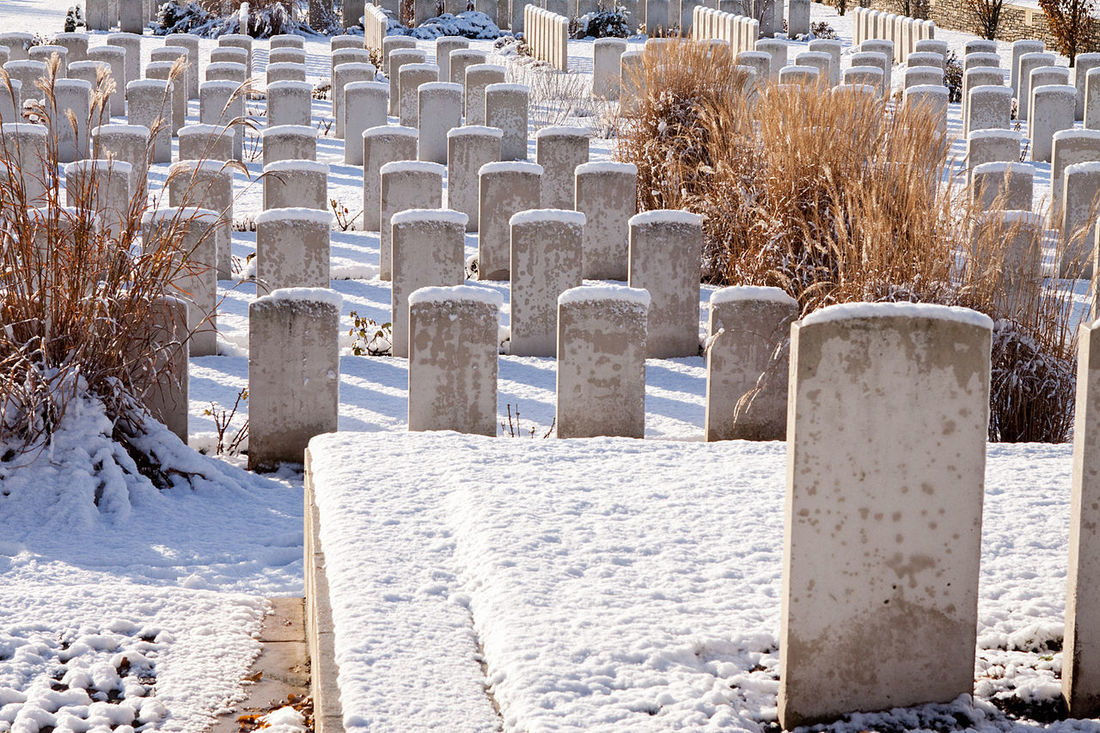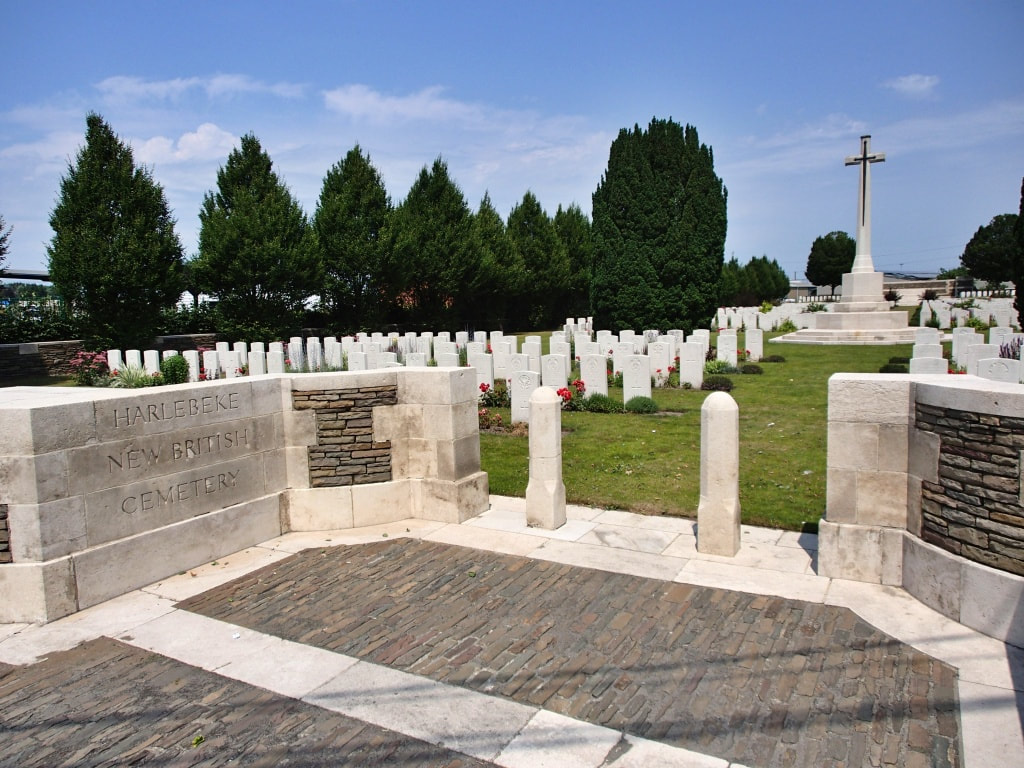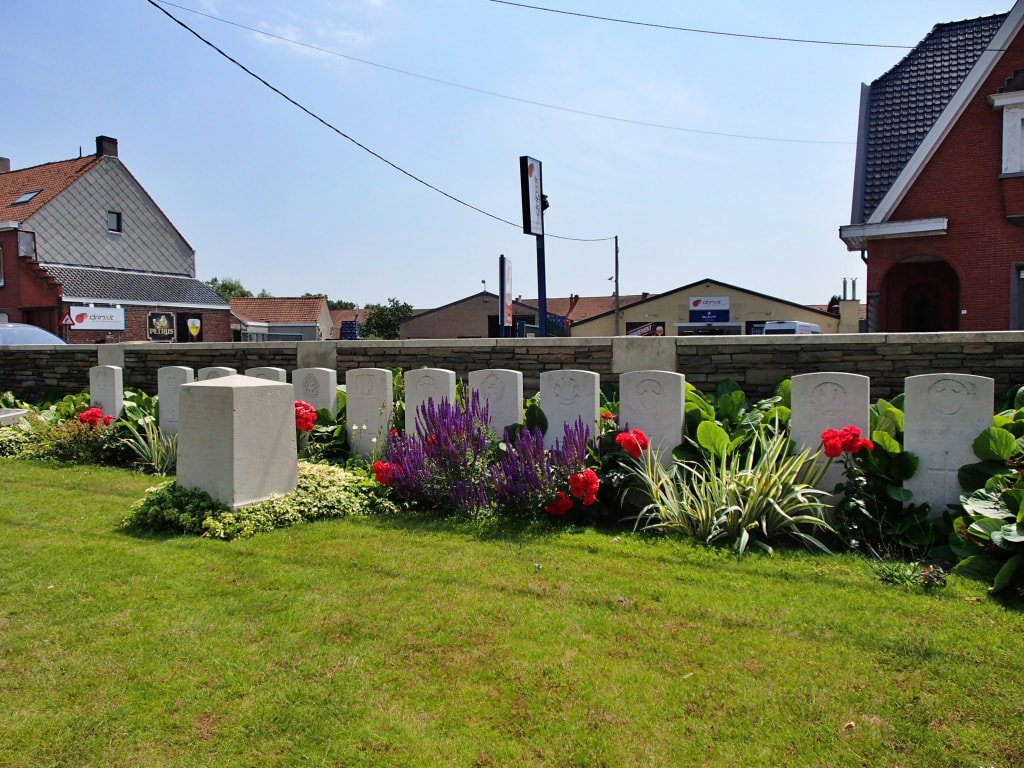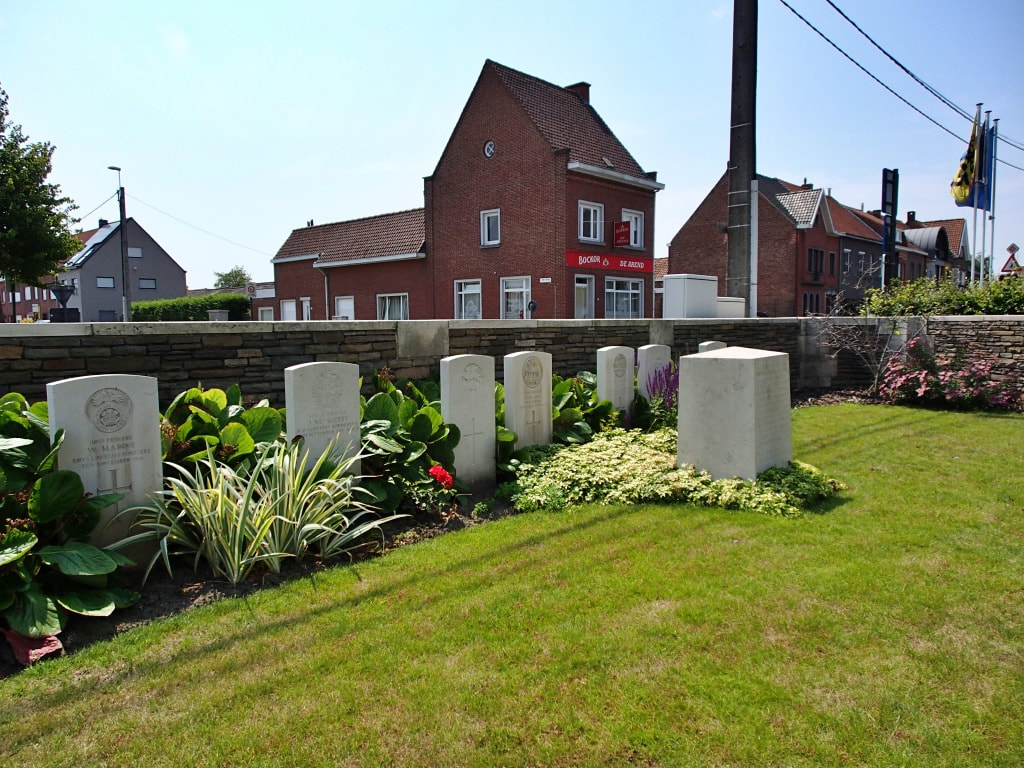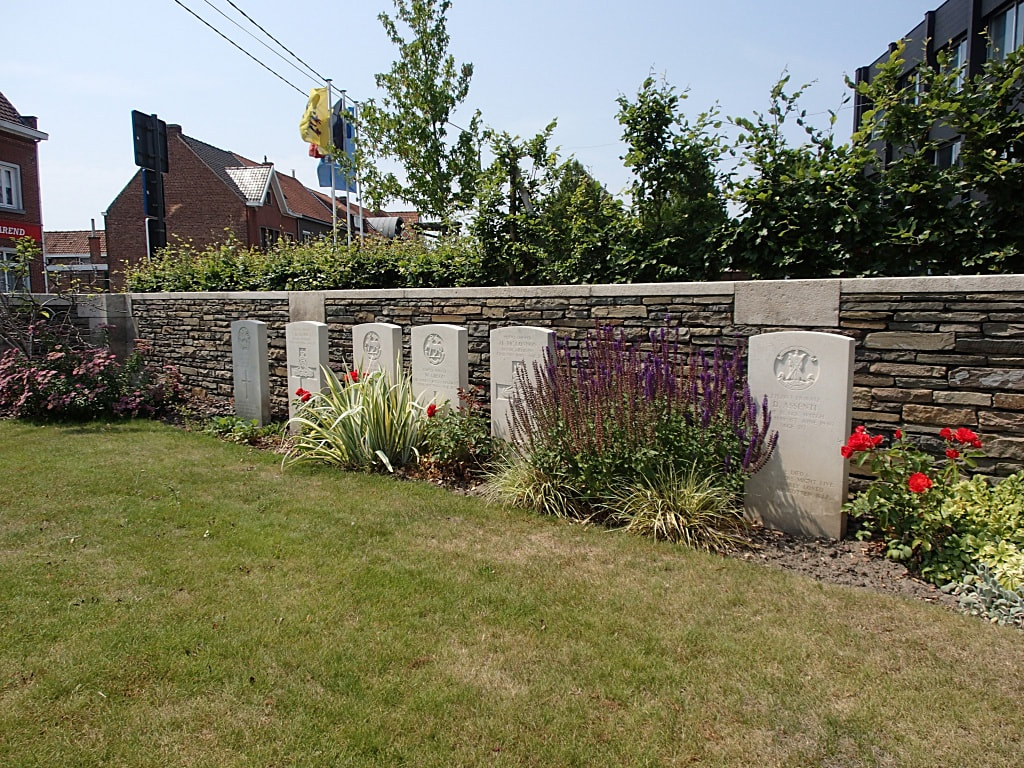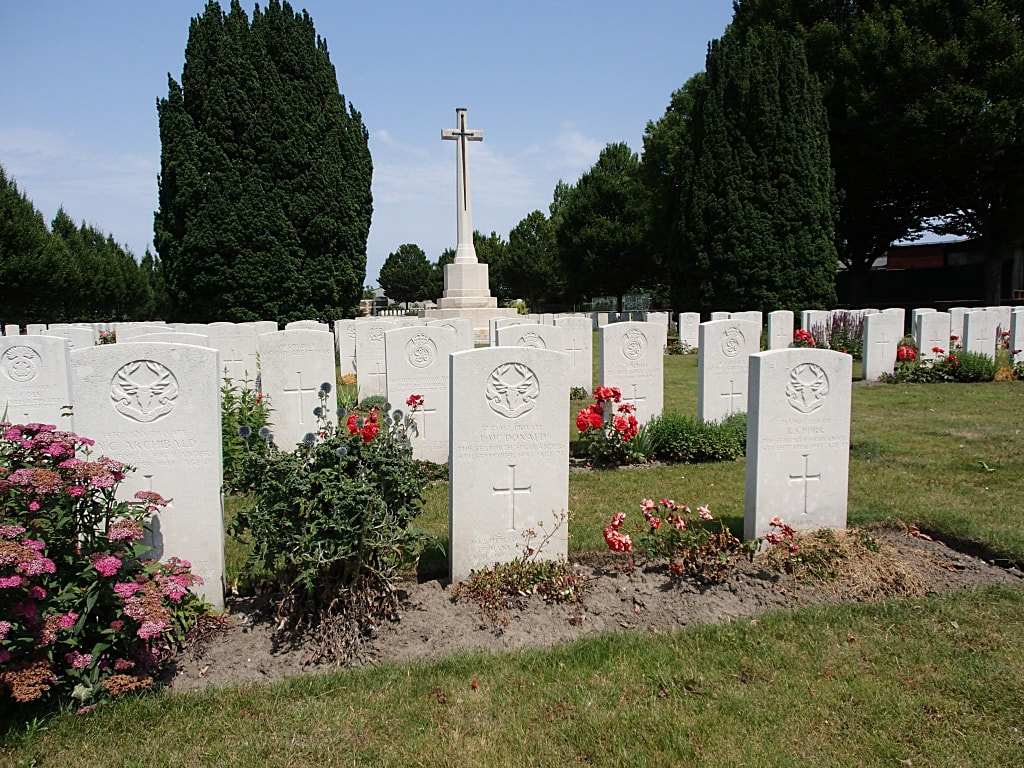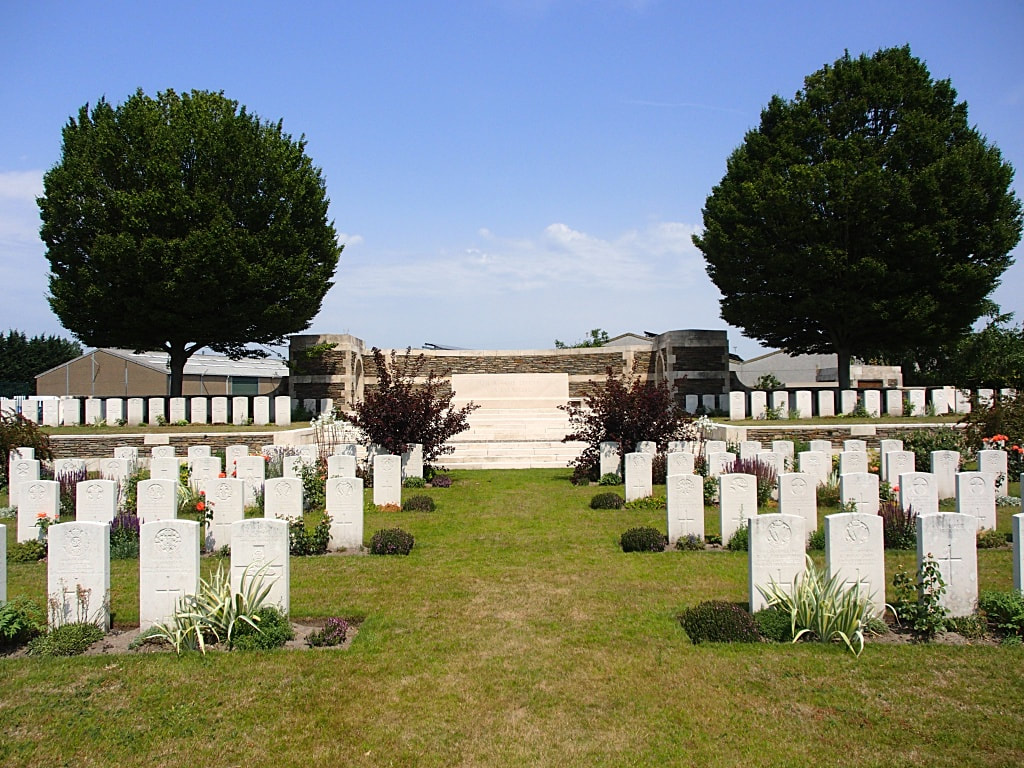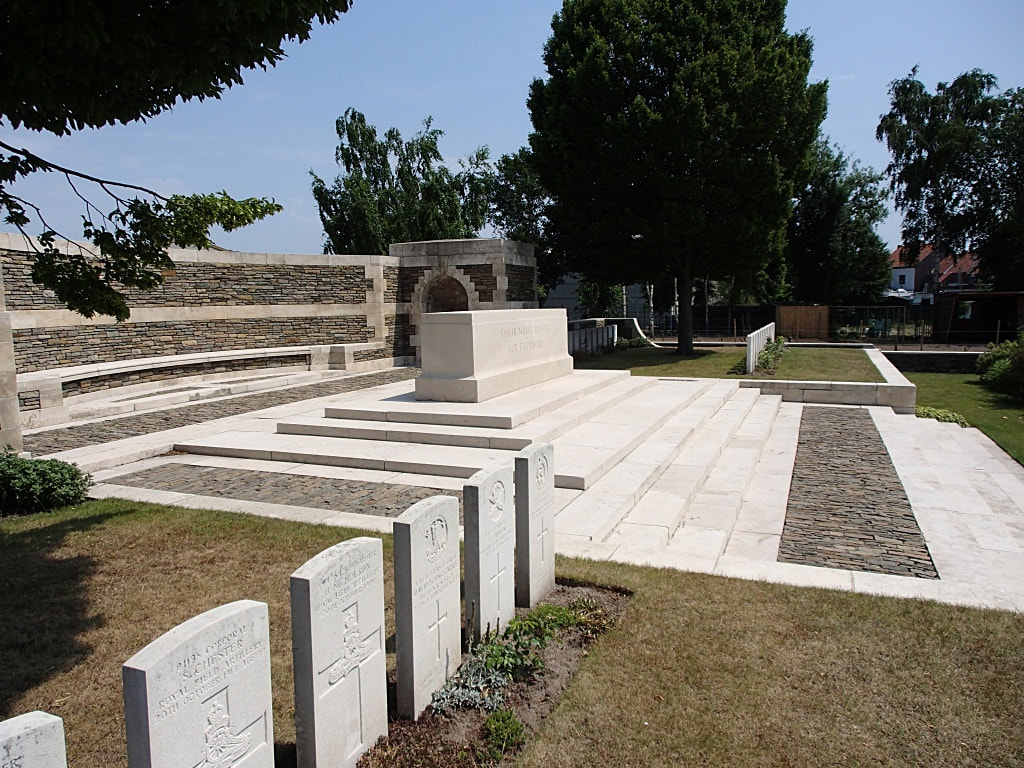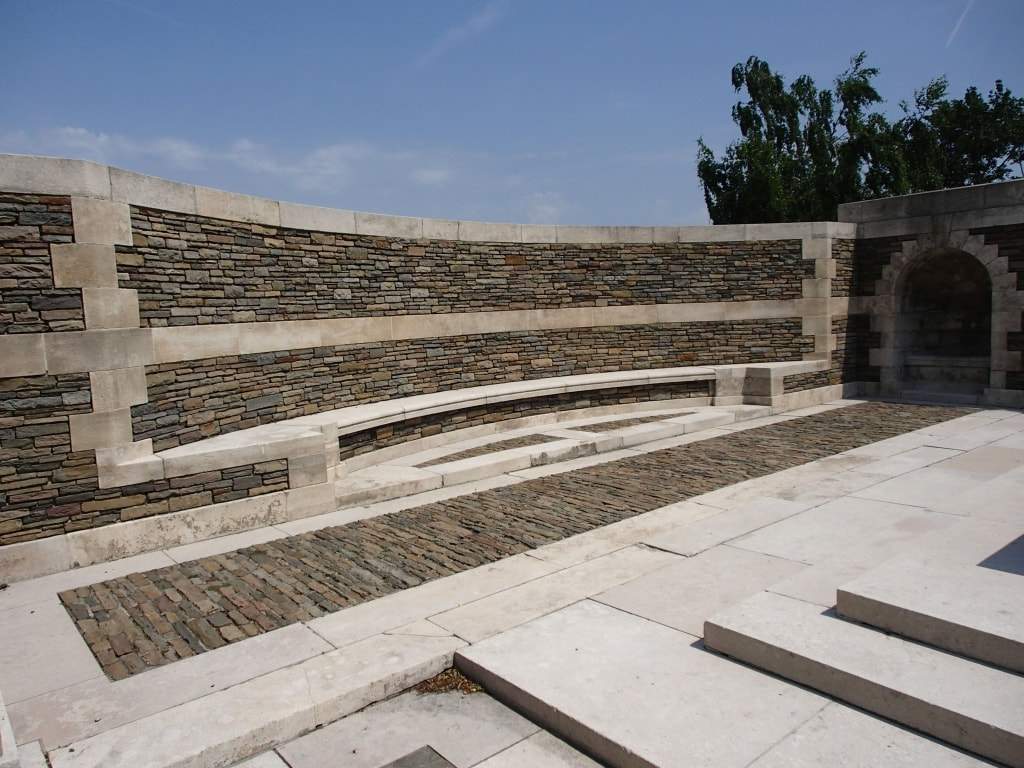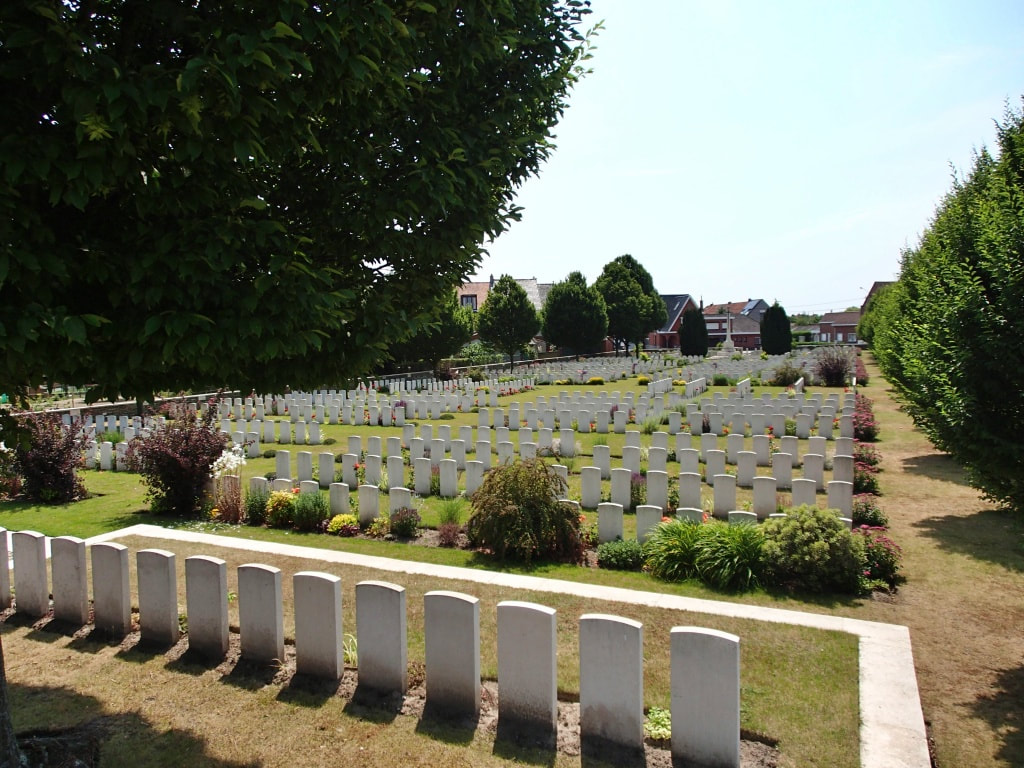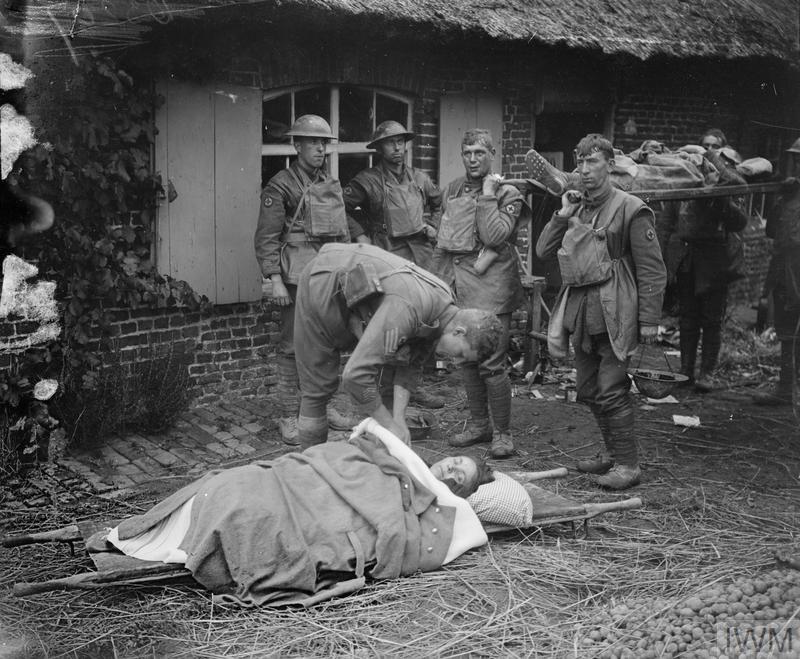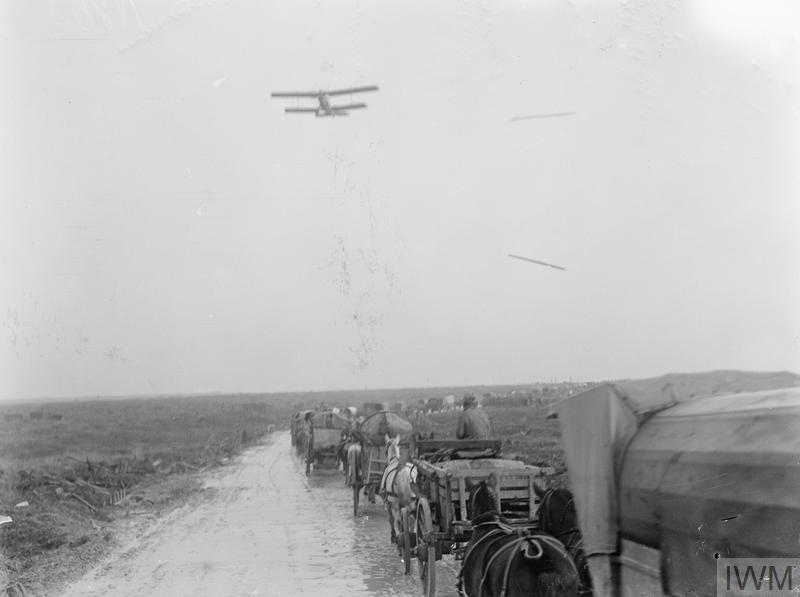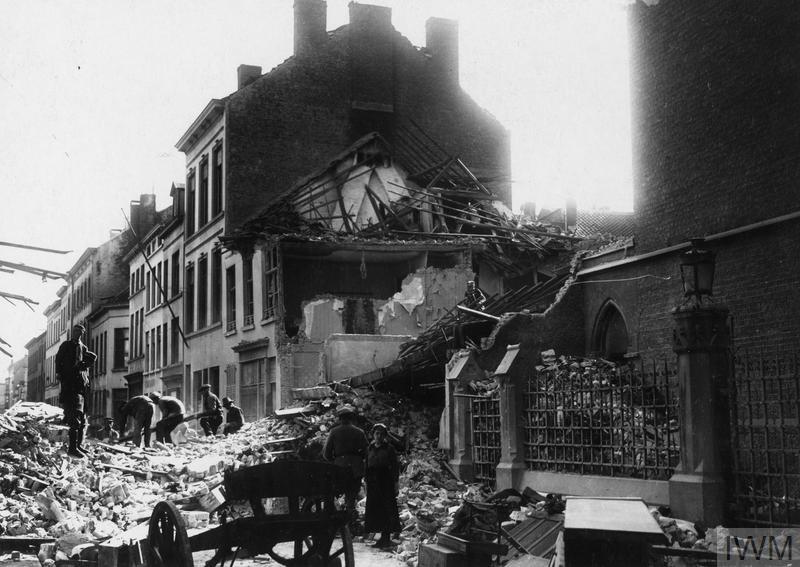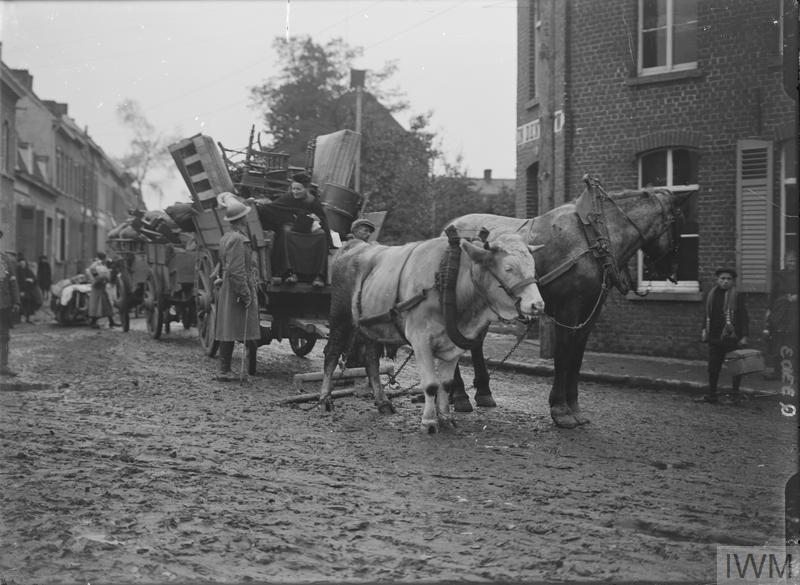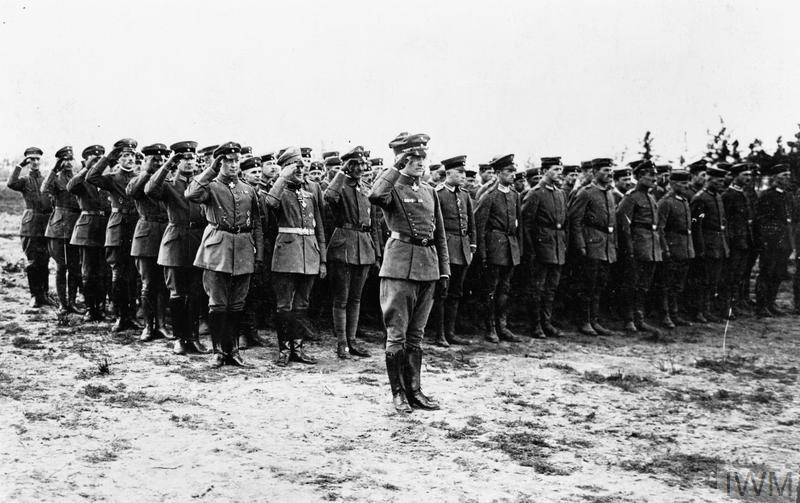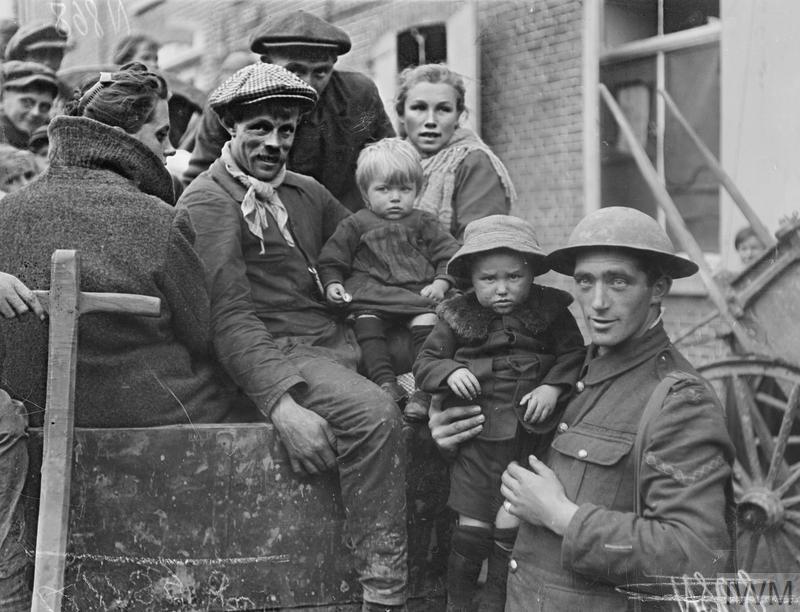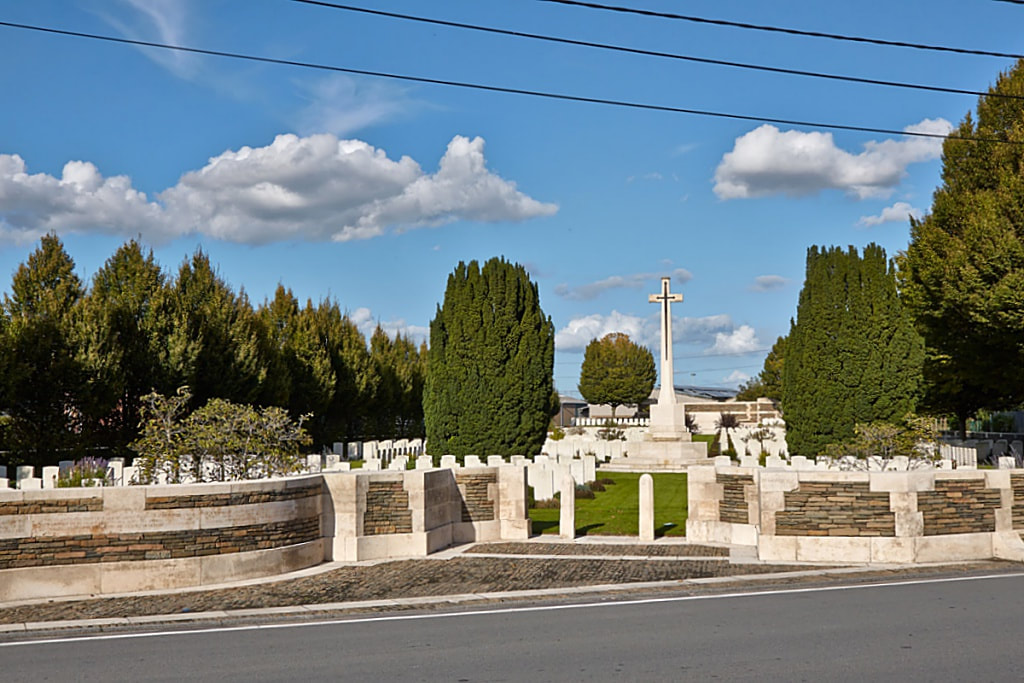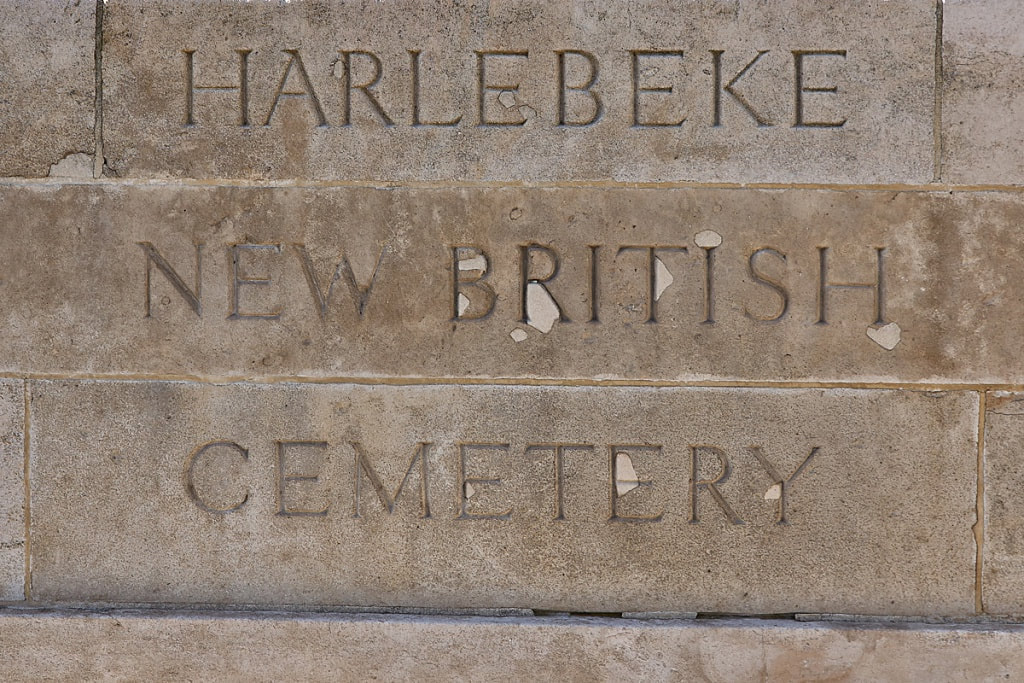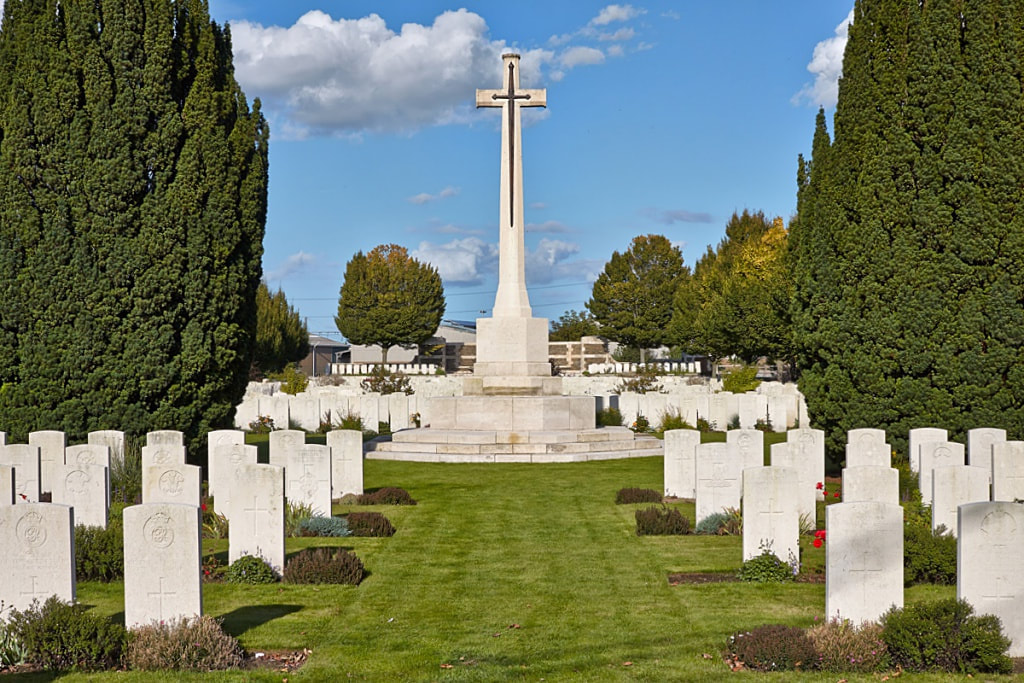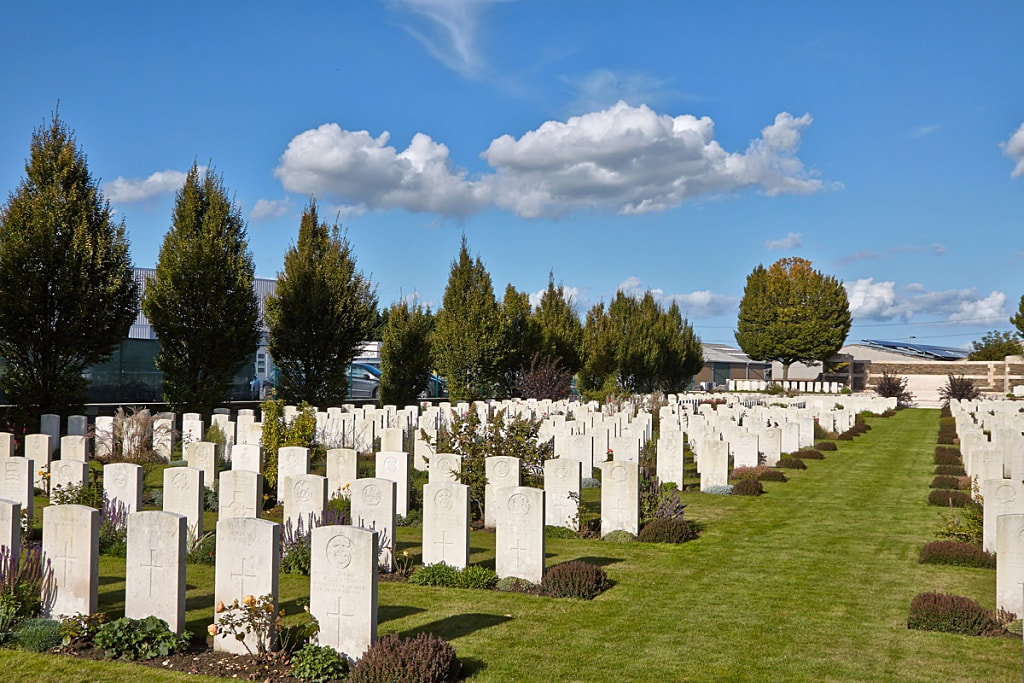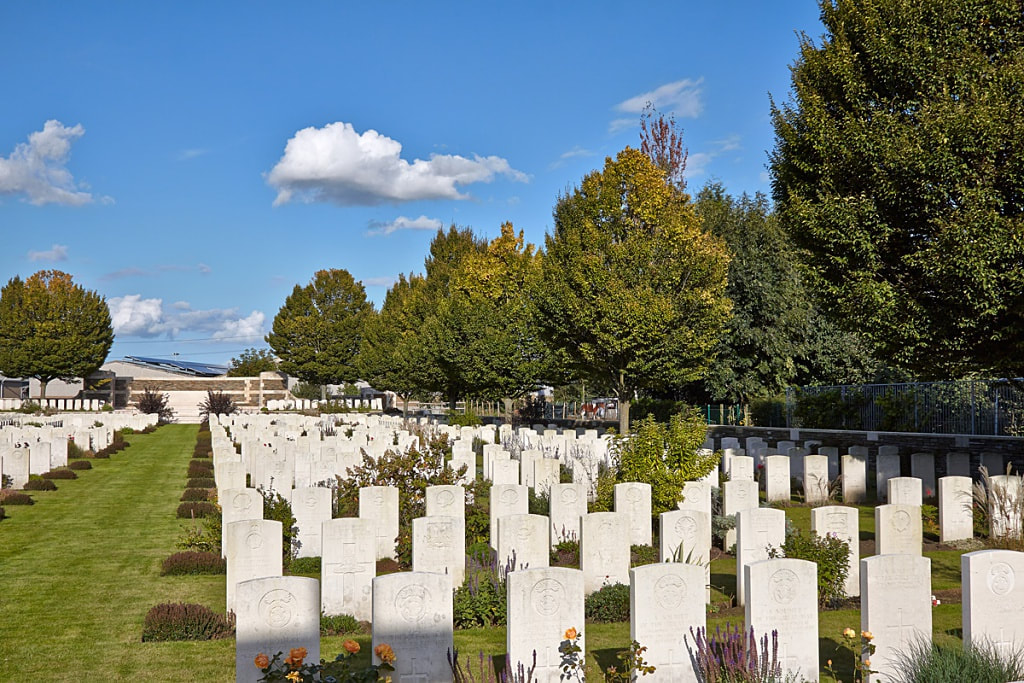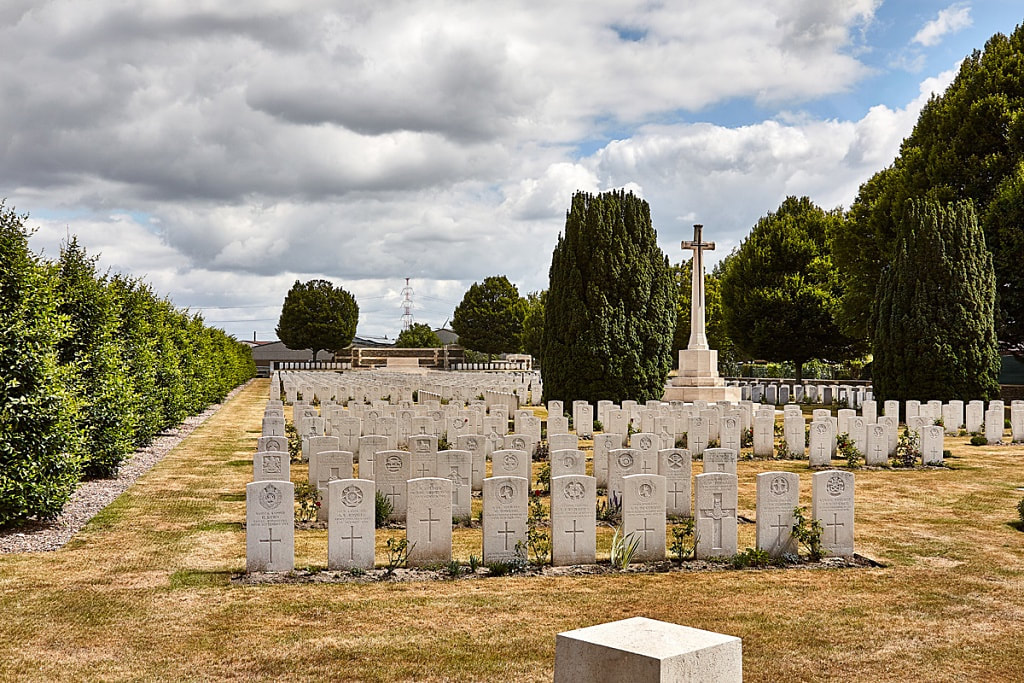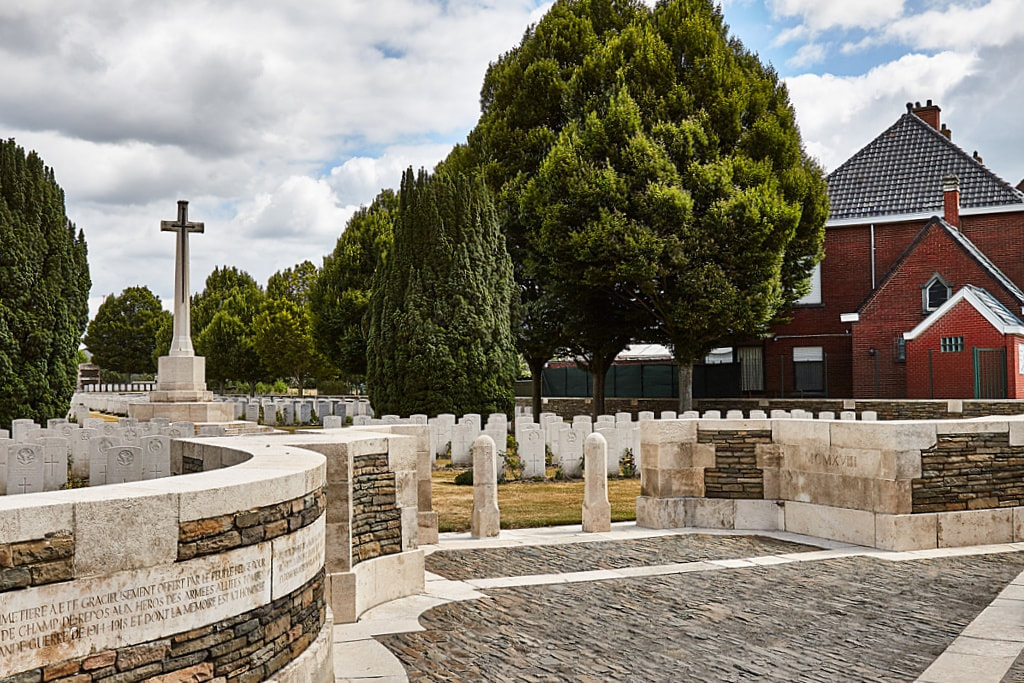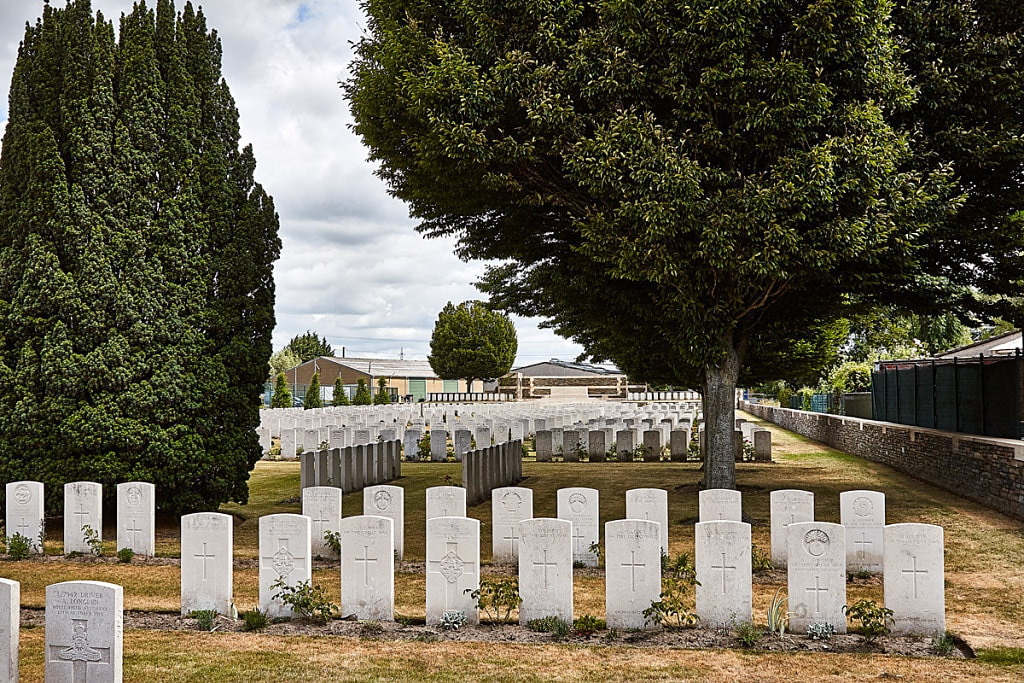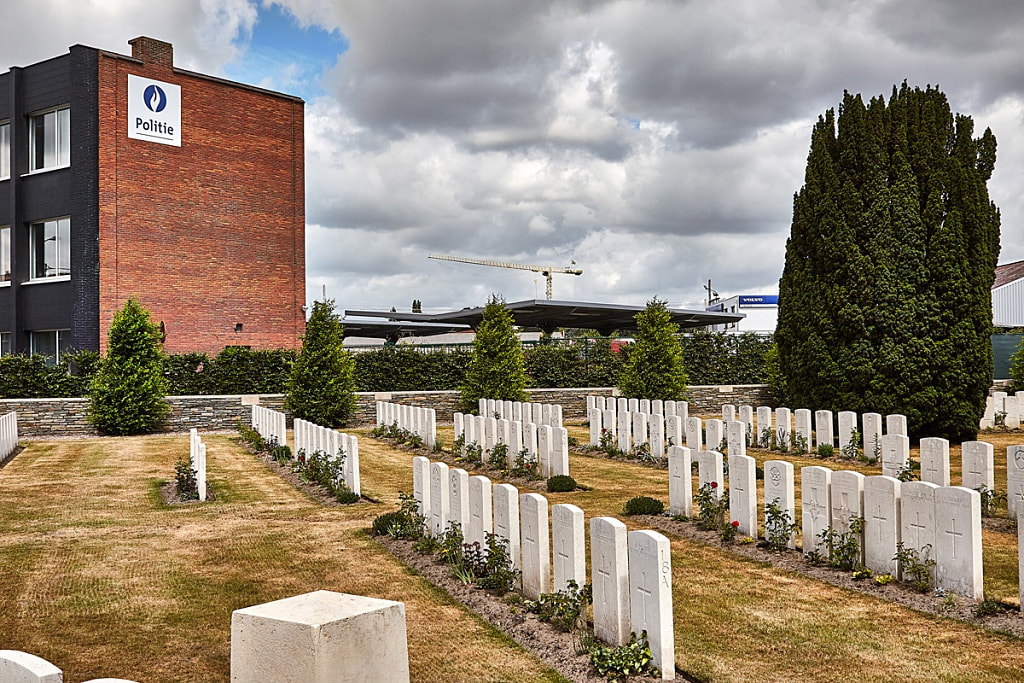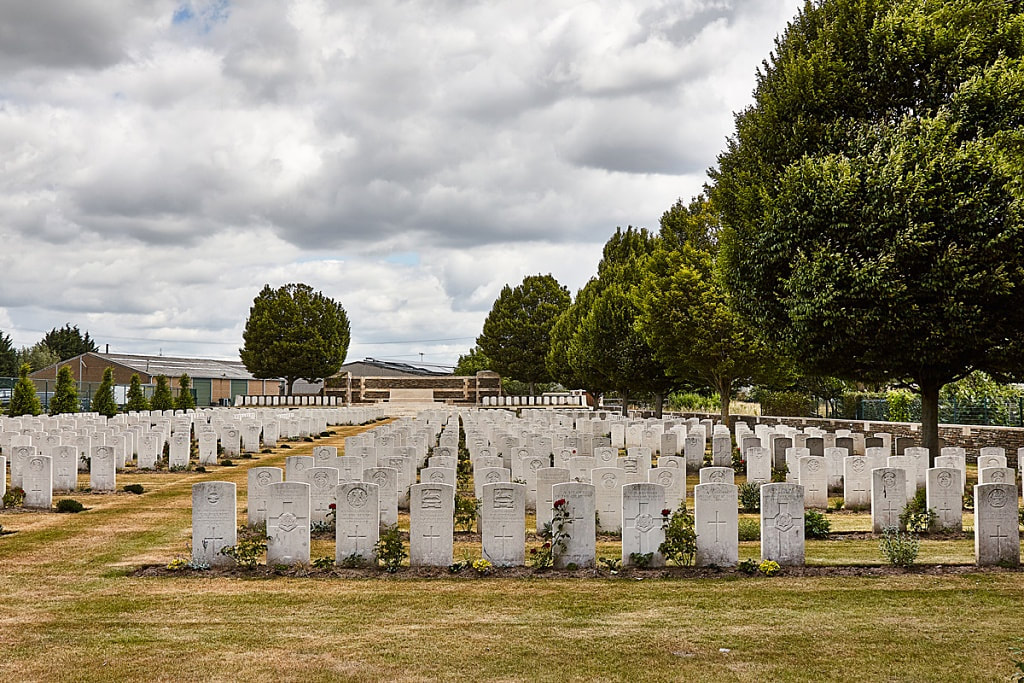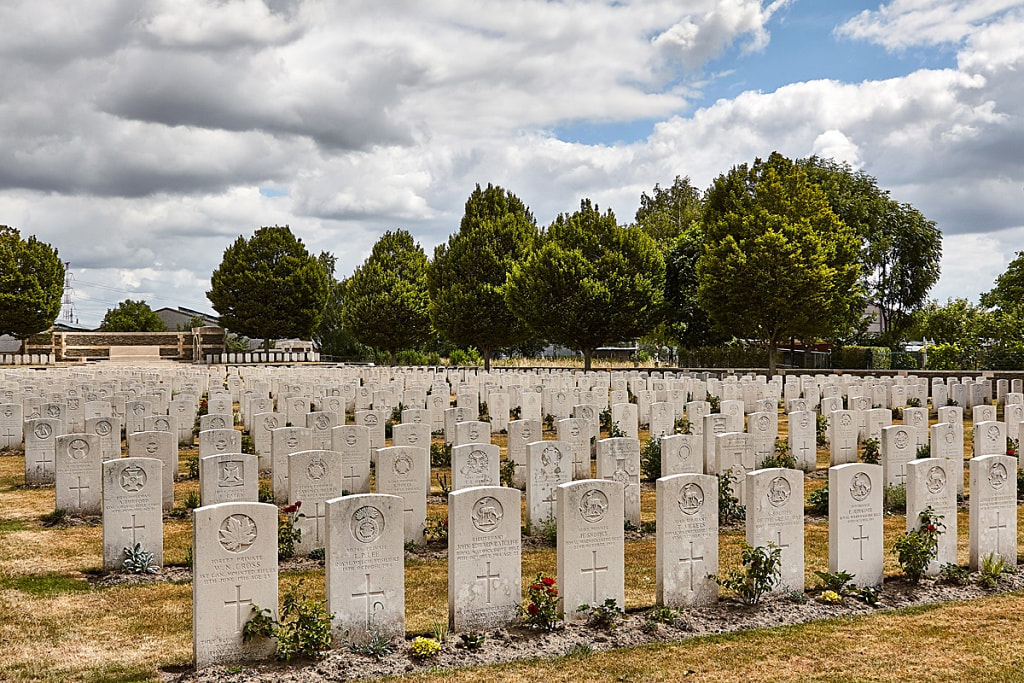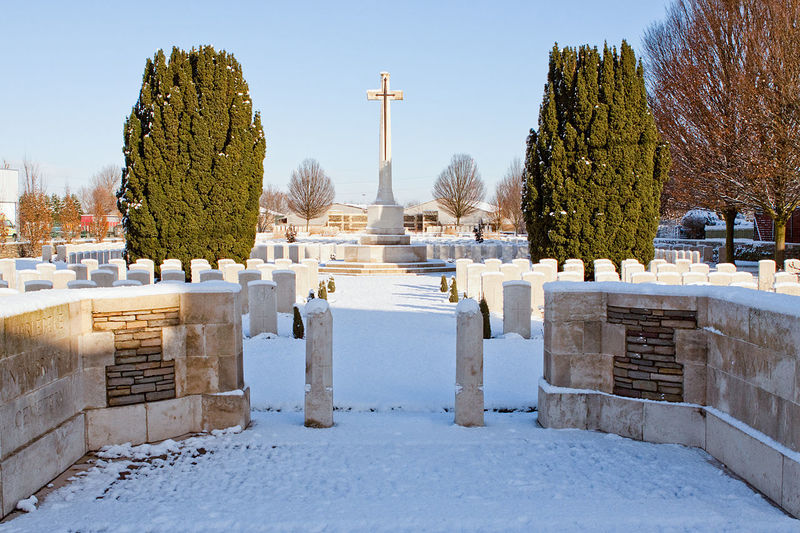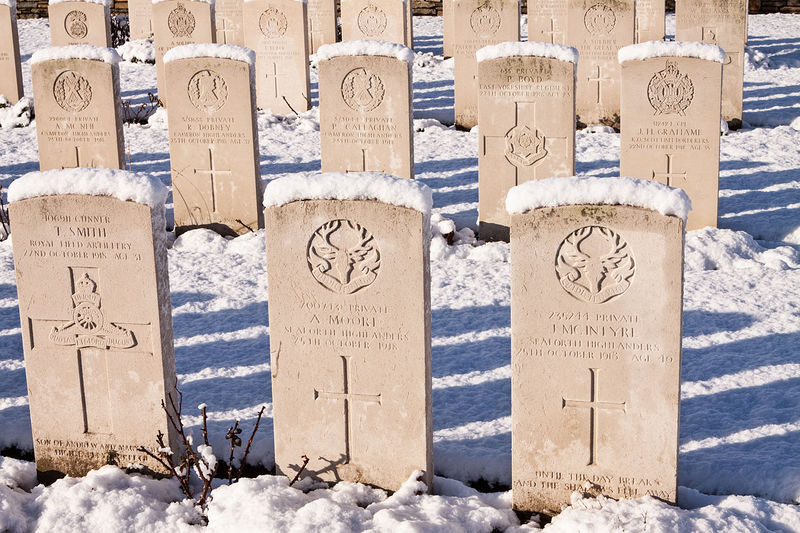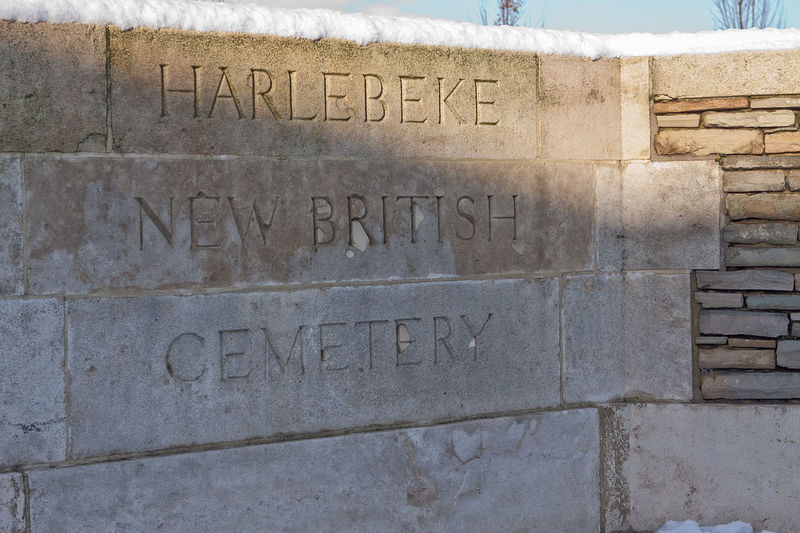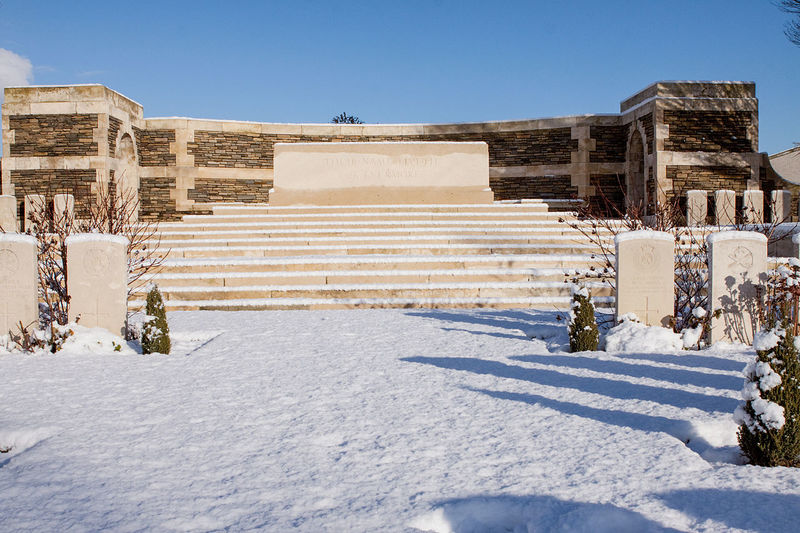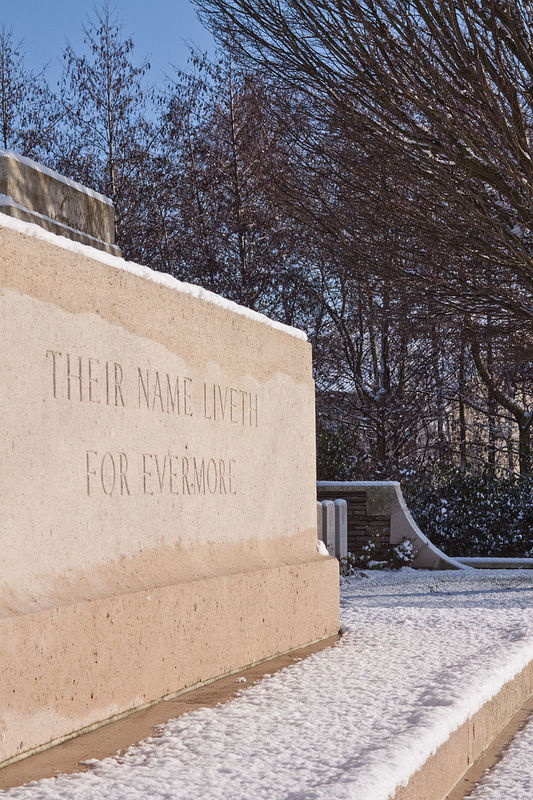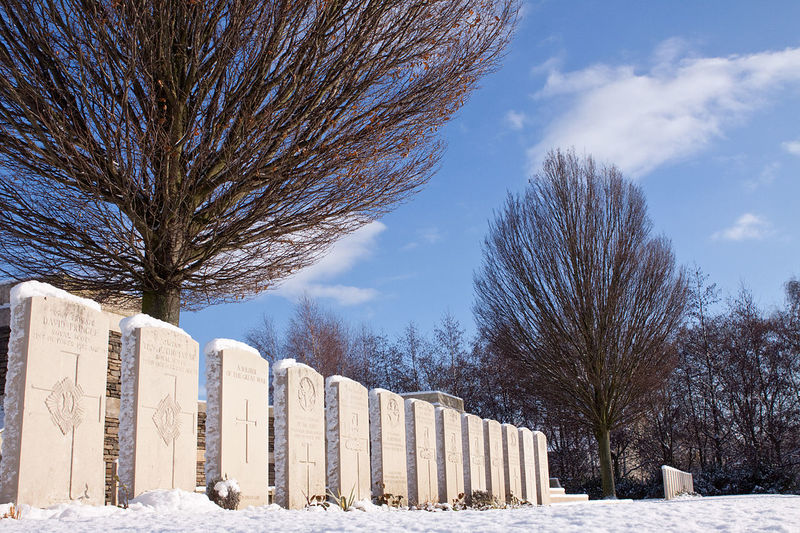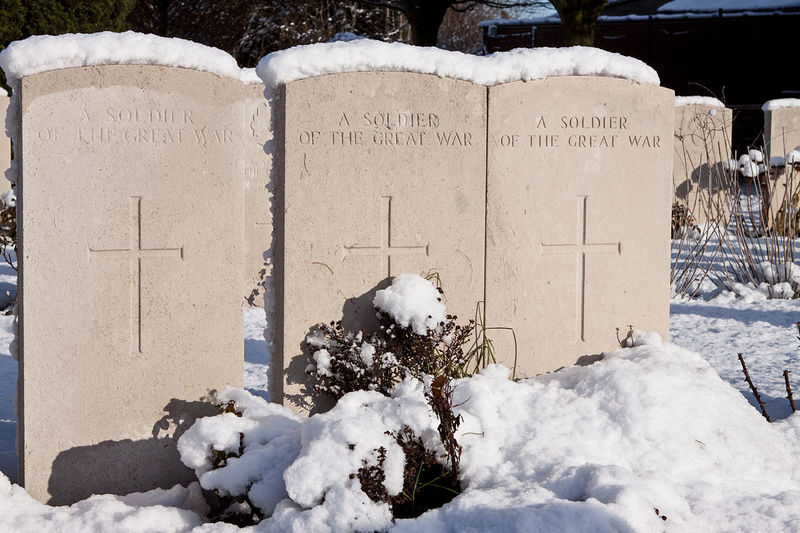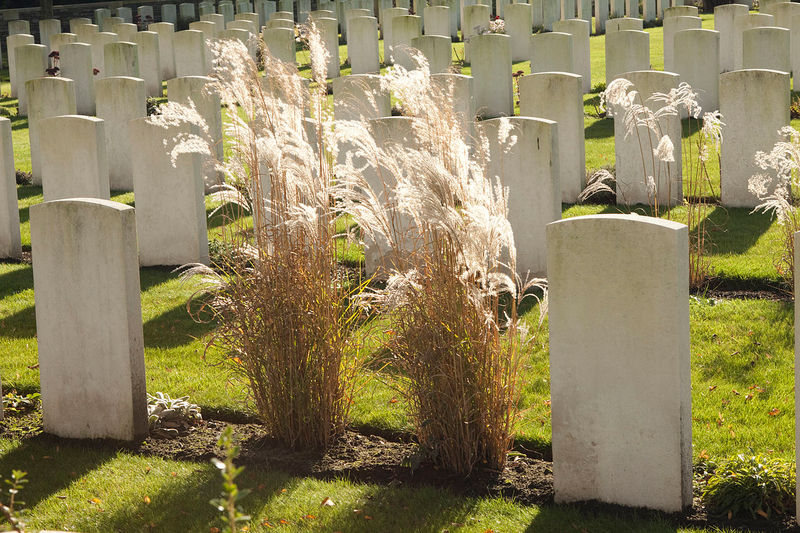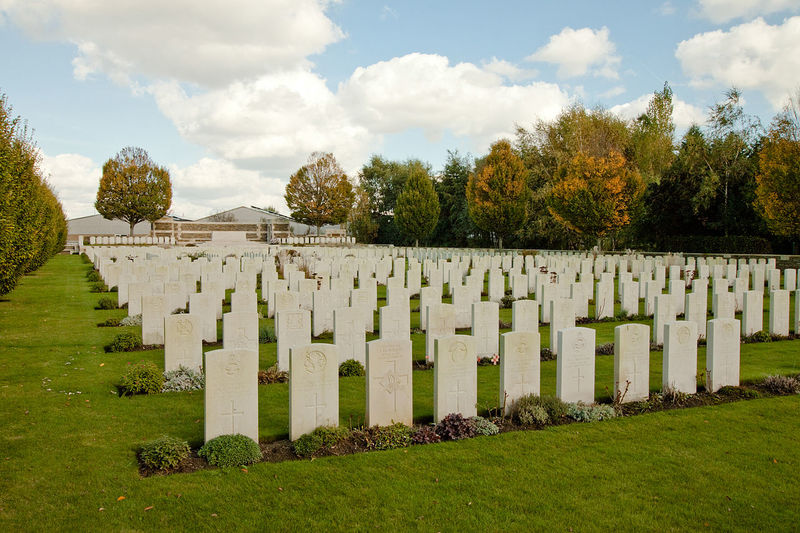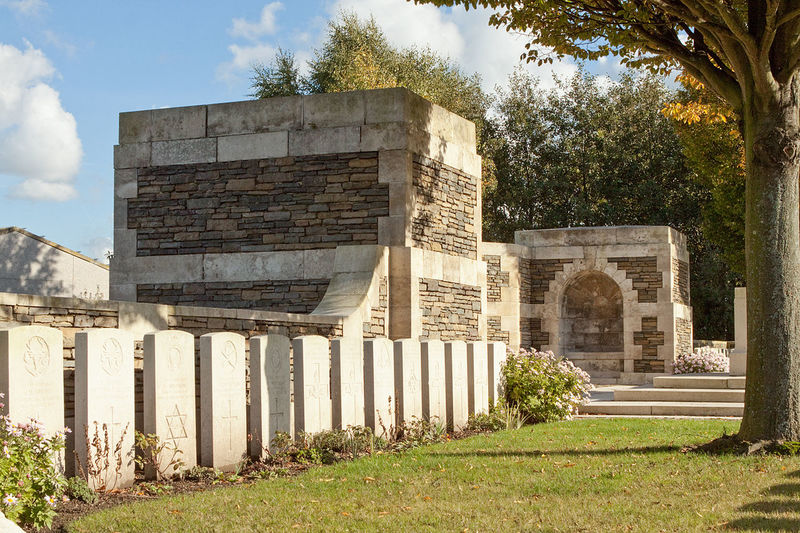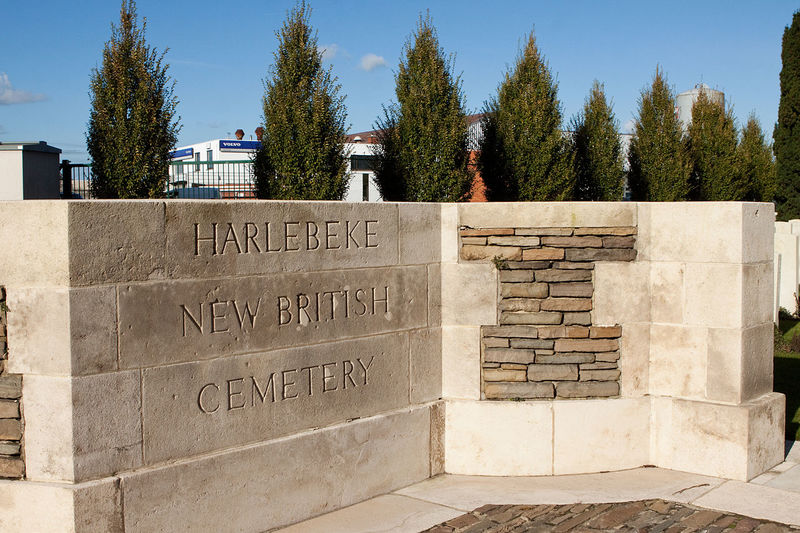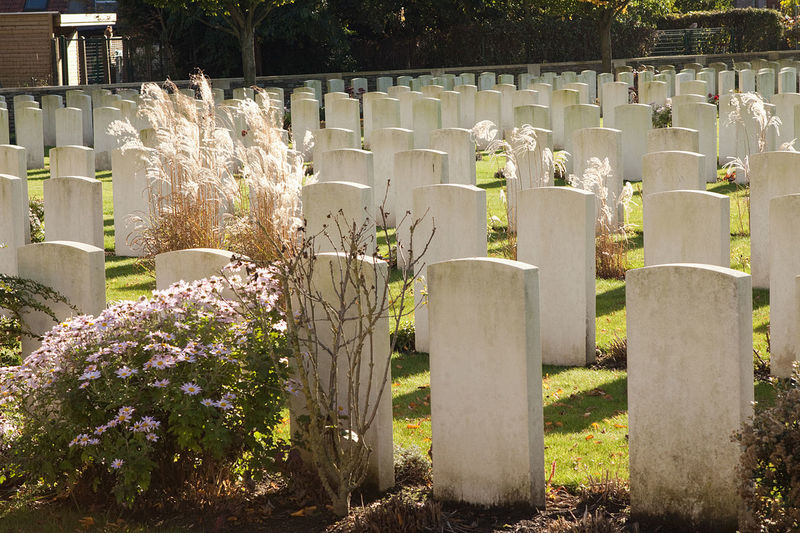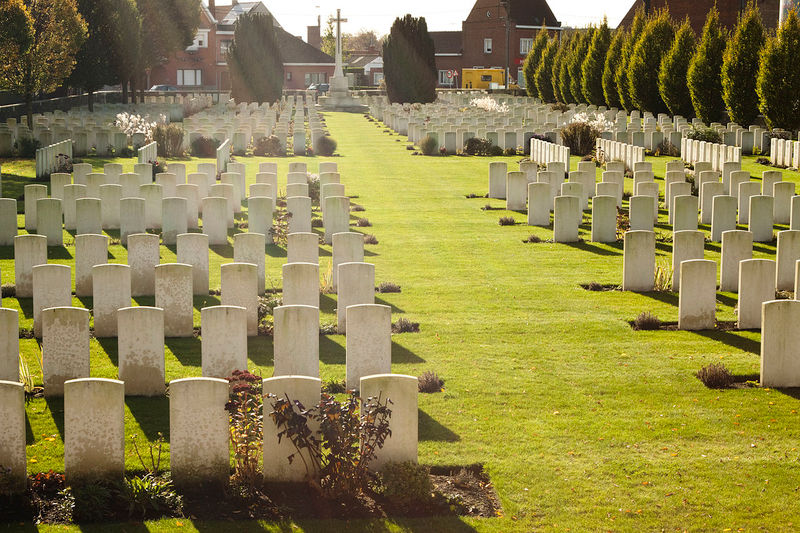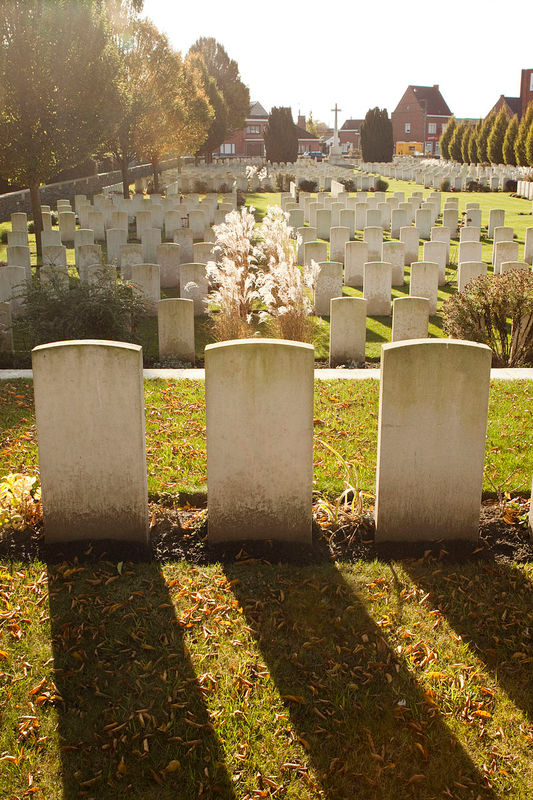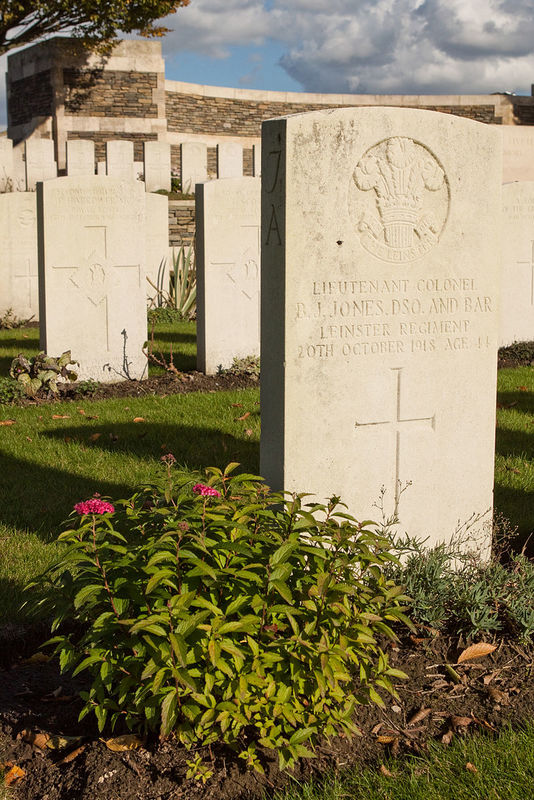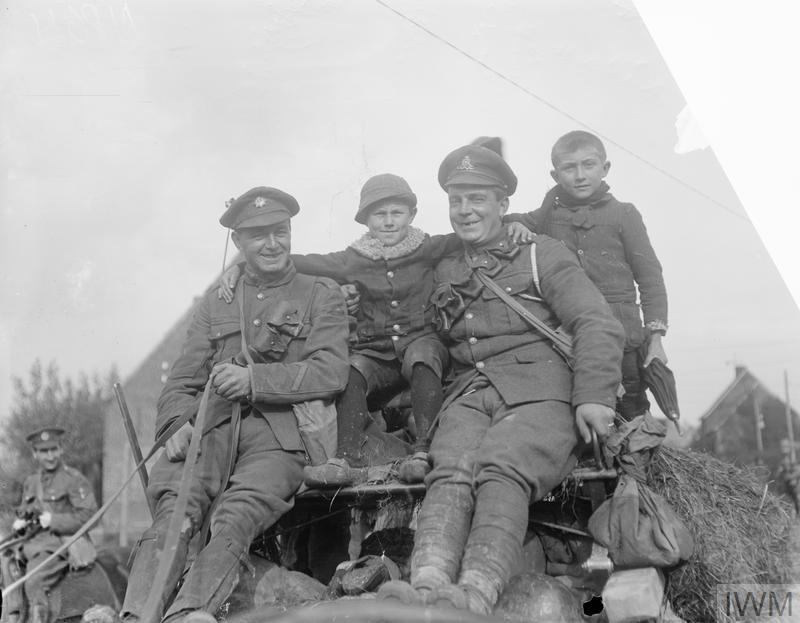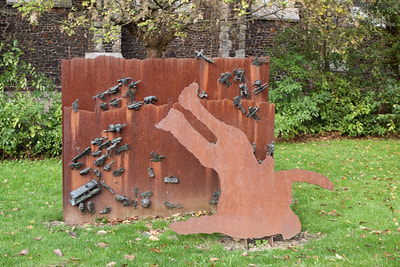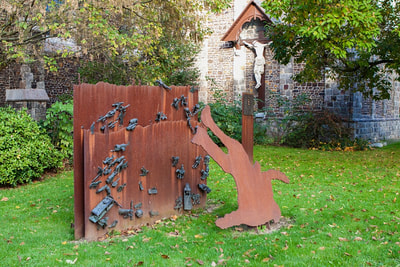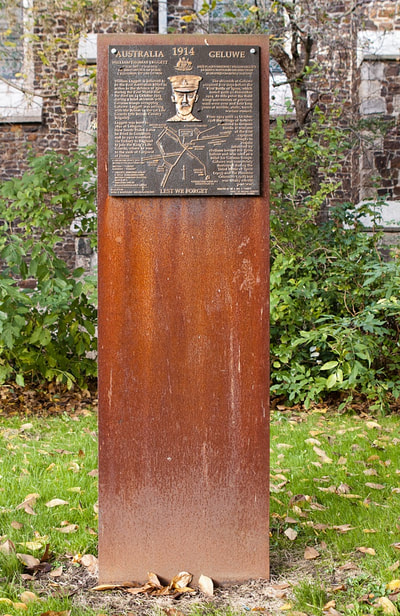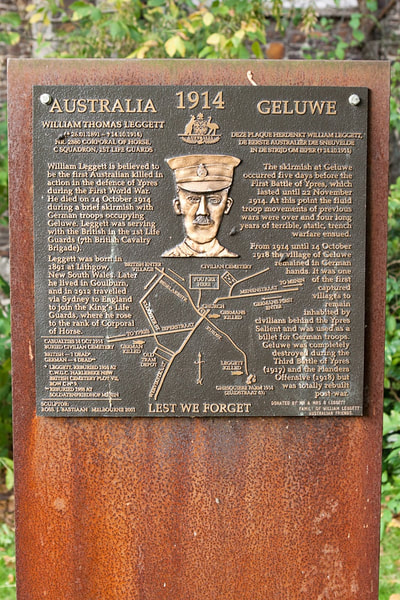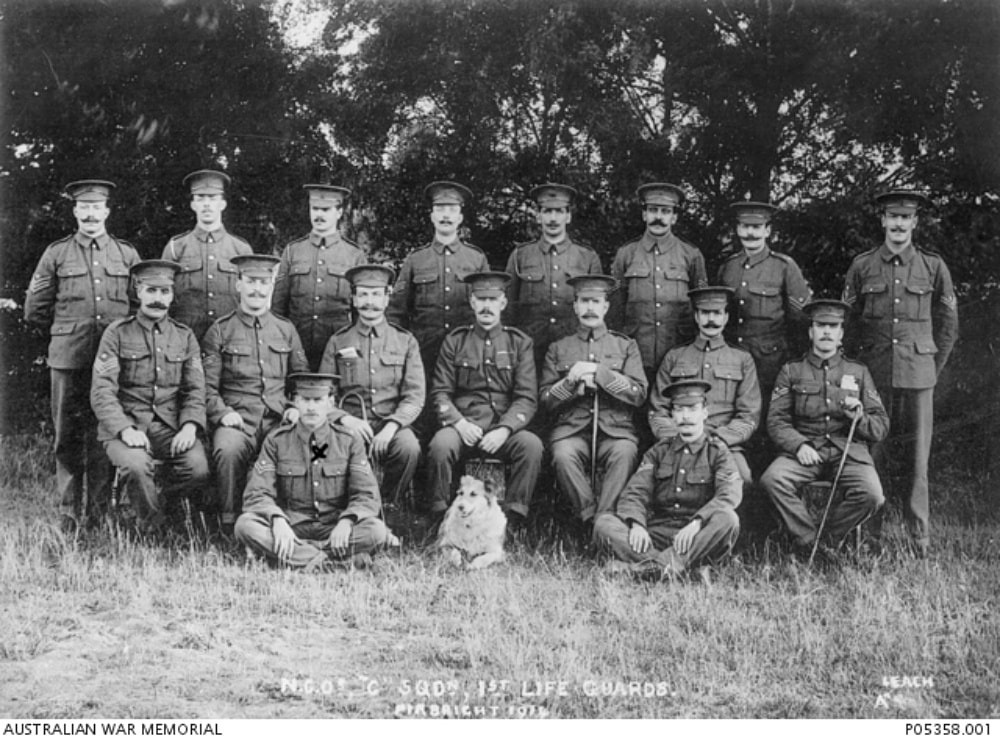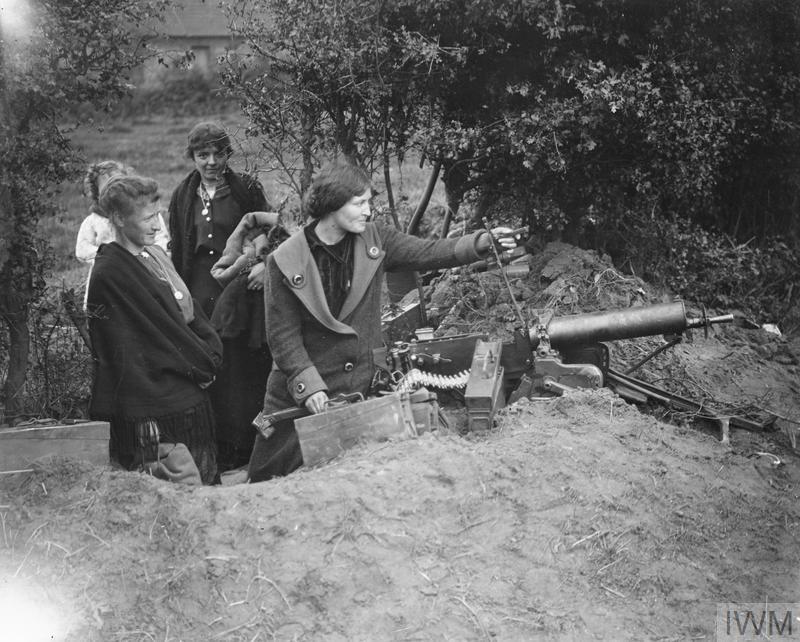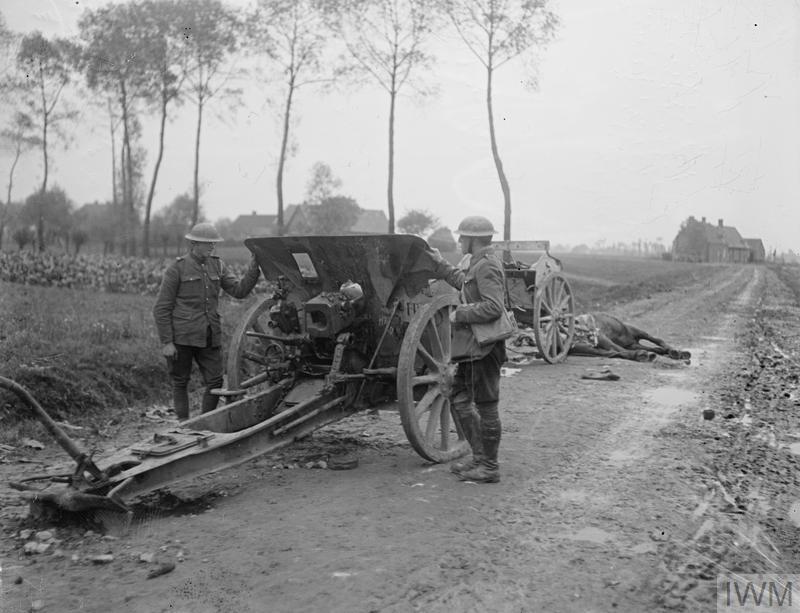HARLEBEKE NEW BRITISH CEMETERY
West-Vlaanderen
Belgium
GPS Coordinates Latitude: 50.85942 Longitude: 3.32437
Location Information
Harlebeke New British Cemetery is located 32 kilometres east of Ieper town centre on a road leading from the N8 Meenseweg, connecting Ieper to Menen, Wevelgem, Kortrijk and Zwevegem.
Ieper is linked to Kortrijk via the N8 passing through Menen and Wevelgem, joining the A17 1.5 kilometres after Wevelgem, in the direction of Gent. The A17 continues for 4 kilometres then meets the junction with the E17 continuing towards Gent. 12 kilometres along the E17 lies the junction with the N36 towards Harlebeke. The N36 ends at a T junction with the N43. Turning left at this junction towards Kortrijk leads to the left hand turning onto Deerlijksestraat. The cemetery is located 250 metres along the Deerlijksestraat on the left hand side.
Visiting Information
Wheelchair access to this cemetery with some difficulty.
Historical Information
Harlebeke village was taken on the night of 19-20 October 1918 by the 9th (Scottish) Division.
Harlebeke New British Cemetery was made after the Armistice when graves were brought in from the surrounding battlefields of 1918 and, in 1924-25, from German cemeteries or plots in Belgium. The earlier concentrations are in Plots I and X, and the later in Plots I, II and XI to XIX. In the latter group are many graves of October 1914.
In May 1940, The British Expeditionary Force was involved in the later stages of the defence of Belgium following the German invasion, and suffered many casualties in covering the withdrawal to Dunkirk. Commonwealth forces did not return until September 1944.
The cemetery now contains 1,116 Commonwealth burials and commemorations of the First World War. 181 of the burials are unidentified and a special memorial is erected to one casualty who is believed to be buried among them. Other special memorials record the names of 19 casualties buried by the Germans in other burial grounds whose graves could not be found on concentration. There are also ten burials of the Second World War in the cemetery.
The cemetery was designed by W H Cowlishaw.
Total Burials: 1,127.
World War One Identified Casualties: United Kingdom 896, Canada 28, Australia 6, South Africa 4, India 2. Total 936.
World War One Unidentified Casualties: 181.
World War Two Identified Casualties: United Kingdom 10.
Images in this gallery © Geerhard Joos
Images in this gallery © Werner Van Caneghem
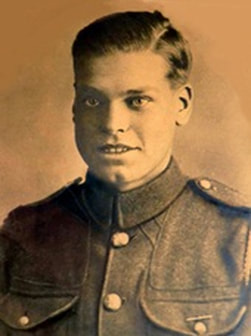
26147 Private
James Reid Dallinger
12th Bn. (Bermondsey) East Surrey Regiment
22nd October 1918, aged 20.
Plot V. C. 5.
Son of William and Elizabeth Dallinger, of 149, Bancroft Rd., Mile End, London
Killed in action 22nd October 2018 crossing the Kortrijk - Bossuit Canal south of Knokke.
Picture courtesy of great nephew, Ivor Dallinger
James Reid Dallinger
12th Bn. (Bermondsey) East Surrey Regiment
22nd October 1918, aged 20.
Plot V. C. 5.
Son of William and Elizabeth Dallinger, of 149, Bancroft Rd., Mile End, London
Killed in action 22nd October 2018 crossing the Kortrijk - Bossuit Canal south of Knokke.
Picture courtesy of great nephew, Ivor Dallinger
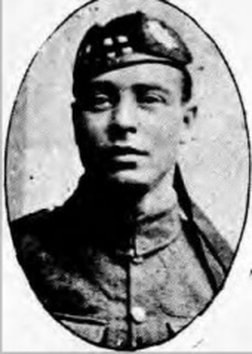
16503 Lance Serjeant
L. Missing
12th Bn. Royal Scots
21st October 1918.
Plot V. D. 15.
L. Missing
12th Bn. Royal Scots
21st October 1918.
Plot V. D. 15.
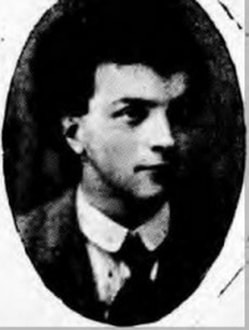
56569 Private
Clifford Frank Kenneth Norden
18th Bn. Lancashire Fusiliers
31st October 1918, aged 19.
Plot I. A. 2.
Son of Mr. and Mrs. W. Norden, of Linton, Cambs.
Clifford Frank Kenneth Norden
18th Bn. Lancashire Fusiliers
31st October 1918, aged 19.
Plot I. A. 2.
Son of Mr. and Mrs. W. Norden, of Linton, Cambs.
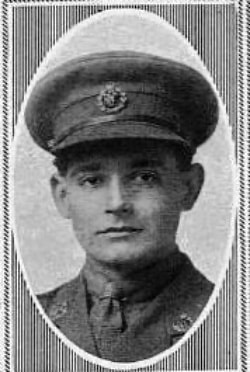
Lieutenant
Clement Wattson Payton
210th Squadron, Royal Air Force
2nd October 1918, aged 21.
Plot II. B. 6.
Croix de Guerre (Belgium). Son of Joseph Wattson Payton and Elizabeth Croydon Payton, of "Westfield," Bridge Rd., Torquay. Born at Walsall, Staffs.
His headstone bears the inscription "Jesu Mercy"
The information below supplied by 'The Ellesmerian Club', the alumni organisation for Ellesmere College where Clement was a pupil.
Clement Wattson Payton
210th Squadron, Royal Air Force
2nd October 1918, aged 21.
Plot II. B. 6.
Croix de Guerre (Belgium). Son of Joseph Wattson Payton and Elizabeth Croydon Payton, of "Westfield," Bridge Rd., Torquay. Born at Walsall, Staffs.
His headstone bears the inscription "Jesu Mercy"
The information below supplied by 'The Ellesmerian Club', the alumni organisation for Ellesmere College where Clement was a pupil.
Clement Wattson Charles Payton, a Flying Ace credited with eleven official ‘kills’ during his brief flying career, was the oldest of three sons of the Reverend Joseph Wattson Payton and his wife, Elizabeth. He was born on 13th April 1897 and entered the ‘Conqueror’ dormitory at Ellesmere College on 20th September 1912, staying for some eighteen months until he left in the Summer of 1914. His two younger brothers Frederick and Vincent also attended the college.
In the short time Clement was at the college he played rugby, football and hockey for his dormitory and represented the college at cricket – in one match taking five wickets for eight runs, an achievement that earnt him his full Colours. He was an active member of the Debating Society and enrolled into the Officer Training Corps.
On leaving Ellesmere, he went to Harrogate to become an apprentice chemist under the instruction of his uncle.
He signed his Attestation Papers on December 8th 1915 and became Driver Payton, Service No. 38134.
By January 1917, he had transferred to the Royal Flying Corps and was a 2nd Class, Air Mechanic – however, he was pulled up on 19th January when based at St. Neot’s Aerodrome for “neglecting to obey an order whilst on active service” - this cost him four days pay but no further details are given. He was posted to France on 20th March 1917 and, three months later, he was an ‘Aerial Gunner on probation’. It would appear that his talent was recognised as he was sent back to England in mid-July.
He was formally discharged from the R.F.C. in November 1917 and was immediately posted to the Royal Naval Air Service where he undertook further training. He was awarded his Royal Aero Aviators’ Certificate, No.5703 on 4th February 1918 and in the same month he was promoted 2nd Lieutenant and appointed a ‘Flying Officer’ – these ranks were confirmed on 1st March. He was posted to No. 10 Naval Squadron on 31stMarch.
The next morning he awoke to find himself a member No. 210 Squadron in the newly formed Royal Air Force. This was a new ‘Service’ created by combining the resources of the Royal Flying Corps and the Royal Naval Air Services. It comprised some 4,000 combat aircraft and 114,000 men in 150 Squadrons – a far cry from the 2,073 men who were in the Royal Flying Corps in 1914.
Lieutenant Payton flew a Sopwith Camel with Dover Patrol, Flanders and his first success came on 20th May 1918 when he drove down a German Albatross DV Fighter over Menen, Belgium. The next day he teamed up with his squadron mates Solomon Clifford Joseph and Albert Leslie Jones to destroy a German observation balloon at Pont Riquen.
On 26th May, another Albatross D.V. fell under his guns and a day later he drove down a Pfalz D III fighter over Bailleul. In June he downed a German Reconnaissance plane and an Albatross DV. He did not score again until August 11th 1918 when he began a string of five destructions of the new German fighter, the Fokker DVII. His eleventh, and final, ‘kill’ was on 1st October 1918.
Clement was one of sixteen RAF pilots killed in action on 2nd October 1918.He was downed by ground fire while bombing an enemy supply train in the vicinity of Courtrai. His Distinguished Flying Cross was gazetted on 3rd December 1918 and read: “A gallant and skilful pilot who has himself destroyed two enemy machines and driven down two out of control. Assisted by other pilots, he has also accounted for four others. On 23rdAugust, in a bombing raid, one of our machines, compelled to descend owing to engine trouble, was heavily engaged by anti-aircraft fire. Observing this, Lt. Payton, with great courage, attacked the hostile batteries at a very low altitude, silencing several of them”.
Major Bell, his Commanding Officer, wrote to his parents: “Your son failed to return from an offensive patrol yesterday morning, and I am sorry to say there can be no hope of his safety, as his machine was seen to fall, out of control, after it had been hit by anti-aircraft fire. Your son was one of my best officers and my best friend when off duty. He was one of the finest boys I ever met, and he always set a splendid example to his fellow-officers. His secret motto must have been 'Deeds not words for he always did his work conscientiously, and never talked about it. He has destroyed five enemy machines and a kite balloon, and has driven two other machines down out of control. He was a skilful pilot and very courageous."
A brother Officer wrote: “there can be no hope of his safety. He must have been hit by a machine gun bullet, as he was very low down (about 600ft). His machine was seen to…..hit the ground near Courtrai. We were all very fond of him. I think his motto must have been ‘Deeds, not words’ for he always did his work conscientiously, and never talked about it”.
In addition to his Distinguished Flying Cross, Clement was awarded the 1914-1915 Star, the British War Medal, the Victory Medal, the French Croix de Guerre and, posthumously, the Belgian Croix de Guerre on July 15th 1919.
He was buried at Harlebeke New British Cemetery, Belgium and his life is commemorated on the Calton War Memorial, Staffordshire and on the War Memorial at Ellesmere College. His brother, Frederick, who also died in the conflict, is commemorated on both memorials beside him. Their youngest brother survived the war
In the short time Clement was at the college he played rugby, football and hockey for his dormitory and represented the college at cricket – in one match taking five wickets for eight runs, an achievement that earnt him his full Colours. He was an active member of the Debating Society and enrolled into the Officer Training Corps.
On leaving Ellesmere, he went to Harrogate to become an apprentice chemist under the instruction of his uncle.
He signed his Attestation Papers on December 8th 1915 and became Driver Payton, Service No. 38134.
By January 1917, he had transferred to the Royal Flying Corps and was a 2nd Class, Air Mechanic – however, he was pulled up on 19th January when based at St. Neot’s Aerodrome for “neglecting to obey an order whilst on active service” - this cost him four days pay but no further details are given. He was posted to France on 20th March 1917 and, three months later, he was an ‘Aerial Gunner on probation’. It would appear that his talent was recognised as he was sent back to England in mid-July.
He was formally discharged from the R.F.C. in November 1917 and was immediately posted to the Royal Naval Air Service where he undertook further training. He was awarded his Royal Aero Aviators’ Certificate, No.5703 on 4th February 1918 and in the same month he was promoted 2nd Lieutenant and appointed a ‘Flying Officer’ – these ranks were confirmed on 1st March. He was posted to No. 10 Naval Squadron on 31stMarch.
The next morning he awoke to find himself a member No. 210 Squadron in the newly formed Royal Air Force. This was a new ‘Service’ created by combining the resources of the Royal Flying Corps and the Royal Naval Air Services. It comprised some 4,000 combat aircraft and 114,000 men in 150 Squadrons – a far cry from the 2,073 men who were in the Royal Flying Corps in 1914.
Lieutenant Payton flew a Sopwith Camel with Dover Patrol, Flanders and his first success came on 20th May 1918 when he drove down a German Albatross DV Fighter over Menen, Belgium. The next day he teamed up with his squadron mates Solomon Clifford Joseph and Albert Leslie Jones to destroy a German observation balloon at Pont Riquen.
On 26th May, another Albatross D.V. fell under his guns and a day later he drove down a Pfalz D III fighter over Bailleul. In June he downed a German Reconnaissance plane and an Albatross DV. He did not score again until August 11th 1918 when he began a string of five destructions of the new German fighter, the Fokker DVII. His eleventh, and final, ‘kill’ was on 1st October 1918.
Clement was one of sixteen RAF pilots killed in action on 2nd October 1918.He was downed by ground fire while bombing an enemy supply train in the vicinity of Courtrai. His Distinguished Flying Cross was gazetted on 3rd December 1918 and read: “A gallant and skilful pilot who has himself destroyed two enemy machines and driven down two out of control. Assisted by other pilots, he has also accounted for four others. On 23rdAugust, in a bombing raid, one of our machines, compelled to descend owing to engine trouble, was heavily engaged by anti-aircraft fire. Observing this, Lt. Payton, with great courage, attacked the hostile batteries at a very low altitude, silencing several of them”.
Major Bell, his Commanding Officer, wrote to his parents: “Your son failed to return from an offensive patrol yesterday morning, and I am sorry to say there can be no hope of his safety, as his machine was seen to fall, out of control, after it had been hit by anti-aircraft fire. Your son was one of my best officers and my best friend when off duty. He was one of the finest boys I ever met, and he always set a splendid example to his fellow-officers. His secret motto must have been 'Deeds not words for he always did his work conscientiously, and never talked about it. He has destroyed five enemy machines and a kite balloon, and has driven two other machines down out of control. He was a skilful pilot and very courageous."
A brother Officer wrote: “there can be no hope of his safety. He must have been hit by a machine gun bullet, as he was very low down (about 600ft). His machine was seen to…..hit the ground near Courtrai. We were all very fond of him. I think his motto must have been ‘Deeds, not words’ for he always did his work conscientiously, and never talked about it”.
In addition to his Distinguished Flying Cross, Clement was awarded the 1914-1915 Star, the British War Medal, the Victory Medal, the French Croix de Guerre and, posthumously, the Belgian Croix de Guerre on July 15th 1919.
He was buried at Harlebeke New British Cemetery, Belgium and his life is commemorated on the Calton War Memorial, Staffordshire and on the War Memorial at Ellesmere College. His brother, Frederick, who also died in the conflict, is commemorated on both memorials beside him. Their youngest brother survived the war
Memorial at Geluwe to Private William Thomas Leggett who is believed to be one of the first Australian soldiers to be killed in The Great War.
(Pictures in gallery © Werner Van Caneghem
2880 Corporal of Horse William Thomas Leggett, 1st Life Guards, died 14th October 1914, aged 23. Son of Mr. and Mrs. George Thomas Leggett, of 116, Victoria St., Goulburn, New South Wales, Australia. Born at Lithgow. New South Wales.
Group portrait of the Non Commissioned Officers of C Squadron, Kings 1st Life Guards. Identified, seated front left is 2880 Corporal (Cpl) William Thomas Leggett. An electrician of Goulburn NSW, he left Australia for London on 20 May 1911 and enlisted in the Kings Life Guards on 4 January 1912. He undertook his initial training at Regents Park where he trained in musketry, fencing, horsemanship and hand to hand combat. In June 1913, after completion of studies, he was appointed instructor at the Aldershot Military School. At the outbreak of the First World War, the Kings 1st Life Guards were deployed to France and then proceded to Belgium. Cpl Leggett was killed in action, aged 23, near the villiage of Poelcappelle on 14 October 1914. He is buried at Harlebeke New British Cemetery and is believed to be one of the first Australian soldiers to be killed in the First World War.

